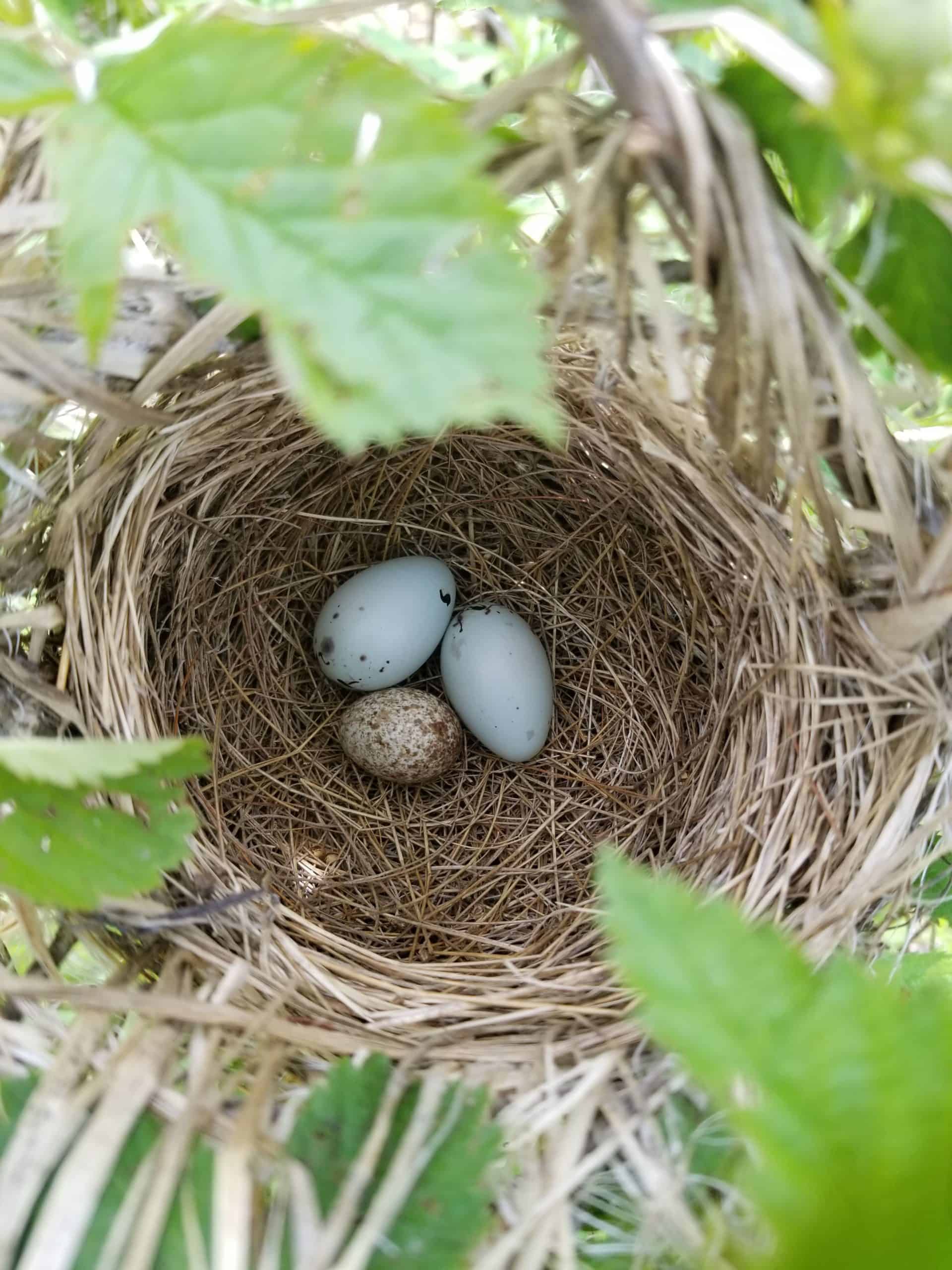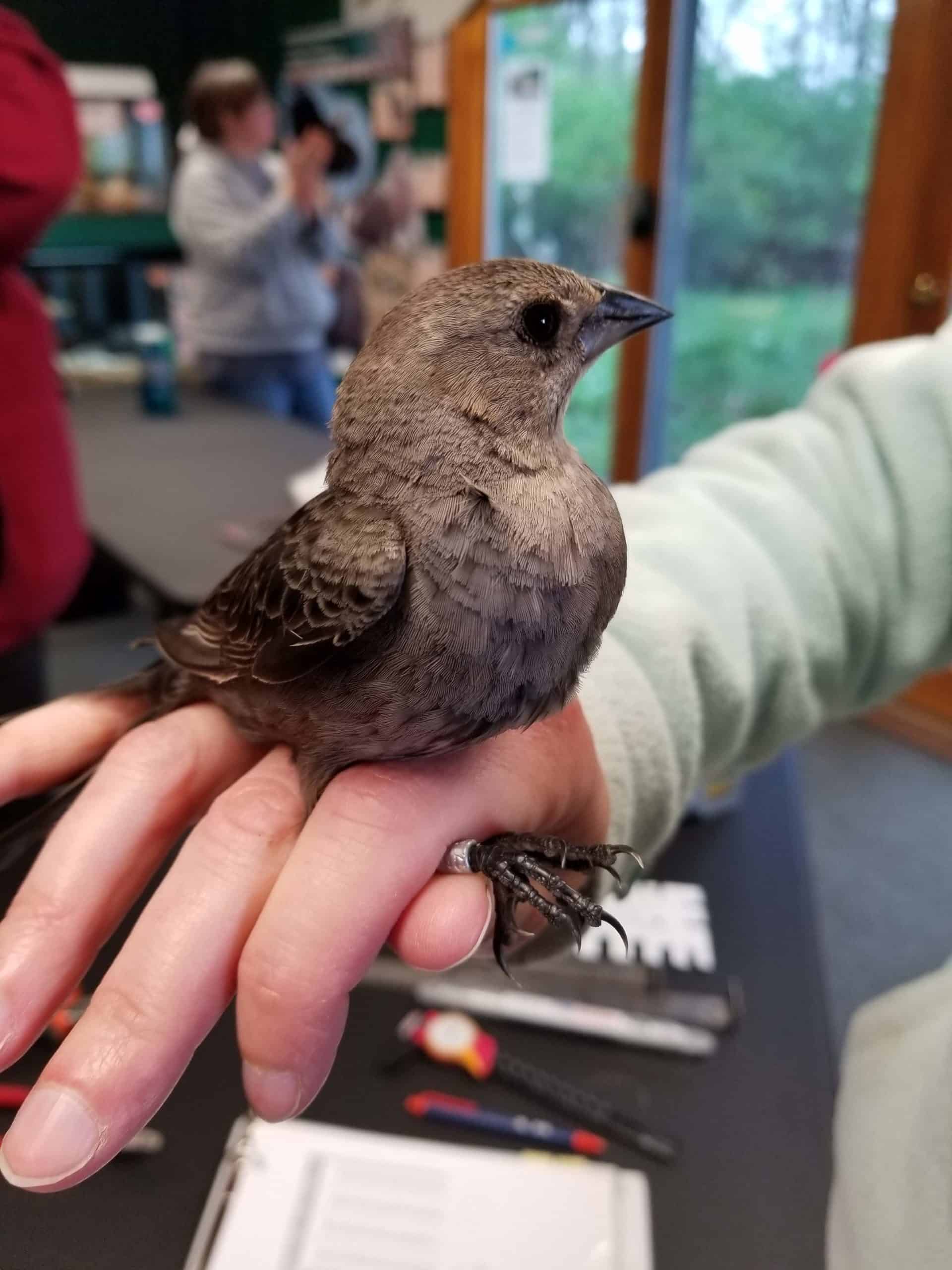Share this article
Blackbirds heed warbler warnings about cowbird danger
To keep their nests safe, blackbirds are homing in on warbler warning signals about dangerous brood parasitic cowbirds.
But the exchange is not one-sided — previous research has found that yellow warblers (Setophaga petechia) benefit from having the extra vigilance around when they nest near red-winged blackbirds (Agelaius phoeniceus).
“This would be the first example of a bird eavesdropping on a call that specifically means brood parasites, which is really unique,” said Shelby Lawson, a PhD student in behavioral ecology at the University of Illinois at Urbana-Champaign and the lead author of a study published recently in Communications Biology.
Brown-head cowbirds (Molothrus ater) lay their eggs in other species’ nests, letting birds like warblers or blackbirds take care of their eggs and subsequently, their hatchlings, after they take off. When the cowbird chicks hatch, they compete for food with the other chicks in the nest. One study even found that cowbirds can resort to “retaliatory mafia behavior” by attacking nests when some birds reject the parasitic eggs. But unlike cuckoos, a brood parasitic species that will often kick the other chicks out of the nest, adopted brown-headed cowbird chicks often rely on the begging calls of the biological offspring to get fed, Lawson said.
Enlarge

Shelby Lawson
With relatively smaller warblers, the cowbird chicks’ size gives them an advantage over the warbler chicks. “They definitely don’t do as well when they have cowbirds in their nests,” Lawson said.
Larger blackbird chicks are about the same size as cowbird chicks, but in many cases, the parasitizing female cowbird removes one of the natural eggs from the nest while laying its own to better disguise it.
Both warblers and blackbirds know these cowbirds are a threat. While many birds have specialized calls to warn of predators, yellow warblers may be the only ones that have a call specific to cowbirds, Lawson said.
“The yellow warbler makes a really cool ‘seet’ call that warns other warblers about cowbirds,” she said.
Lawson studies various aspects of the yellow warbler calls, and while doing fieldwork, she began to notice that red-winged blackbirds also responded to these calls.
They ran an experiment, playing back the sounds of warbler ‘seets’ to blackbirds as well as other sounds like those of nest-predating blue jays (Cyanocitta cristata), cowbird calls, the calls of other red-winged blackbirds and a control call.
Lawson said they found that red-winged blackbirds responded to the ‘seet’ calls from the warblers, the cowbird calls and the blue jay calls all equally.
“They seem to treat the ‘seet’ call as a nest danger call, not just a general danger,” she said.
The researchers aren’t yet sure whether the blackbirds understand the warbler signals well enough to realize the sound is specific to cowbirds, or if they just treat it as a general nest danger call, Lawson said. She’s planning a follow up study to determine that.
Enlarge

By Shelby Lawson
While the eavesdropping may seem one-sided, she also said that other research found warblers that make their nests near blackbirds are parasitized less often. It’s also possible, Lawson said, that the warblers are actually hoping to warn the blackbirds as well, using them as a “frontline defense” for their own nests.
“It tells us that birds actively use social information from other species, and there’s still more to discover about the types of signals they may be eavesdropping on,” she said.
Header Image: Researchers Shelby Lawson, left, and Janice Enos with a yellow warbler, a species that has a special call to warn when cowbirds are near. ©Shelby Lawson








